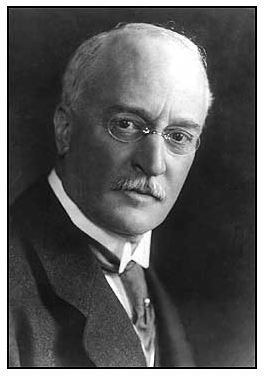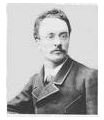Biography of Rudolf Diesel, Inventor of Diesel Engine
Rudolf Diesel

Early life and education
Rudolf Diesel was born in 1858 in Paris to Bavarian immigrants Theodore and Elise Diesel. With the 1870 outbreak of the Franco-Prussian War, the Diesel family moved to London, but before the war was over, young Rudolf went to live with an aunt and uncle in the German city of Augsburg. His parents wanted him to learn to speak German, and hoped he would take interest in attending the Konigliche Kreis-Gewerbsschule, or Royal County Trade School.
Young Diesel graduated at the top of his class in 1873 and enrolled in the Industrial School of Augsburg. Two years later he enrolled at the Royal Bavarian Polytechnic in Munich. He would have graduated in July 1879, but he was sick with typhoid fever. He graduated in January 1880 and moved back to Paris. There, he went to work for his former professor Carl von Linde in the design and construction of a refrigeration and ice plant.
Early Career
While working for Linde, Diesel married and welcomed three children. During this time he won several patents in France and Germany. In 1890, the Diesel family moved to Berlin where Rudolf supervised Linde’s corporate research and development.
The patents that Diesel developed while working for Linde belonged to the company, so he was not allowed to use them for his own purposes. But in his free time, Diesel expanded his research into engines, specifically steam engines. One engine that Diesel designed that used ammonia vapor exploded and almost killed him.
The Engine
Later, Diesel theorized about an engine based on the Carnot cycle, which led him to publish in 1893 a study of “Theory and Construction of a Rational Heat-engine to Replace the Steam Engine and Combustion Engines Known Today” (translated from the German). On this, Diesel based his research and development of the Diesel engine.
What Diesel cared about was developing an efficient engine. A Carnot engine, based on what is known as the Carnot cycle, is a theoretical construct of a perfectly reversible heat engine in which no energy is wasted. Diesel’s experimental engine was far more efficient than steam engines, which are only about 12% thermodynamically efficient. This means that almost 90% of the energy available in the fuel is lost as waste heat. From 1893 to 1897, Diesel tested his ideas and obtained patents for his engine in Germany and the USA. What is now known as the diesel engine (lowercase “d”) has become a workhorse in stationary engines, submarines, ships, trains, trucks, and cars. Diesel engines particularly excel in applications where high torque and low RPM (revolutions per minute) are necessary.
Other ideas
Though Diesel’s 1900 engine that debuted in Paris ran on peanut oil, it never really caught on. But the petroleum industry pounced, offering a cheap alternative that came to be called diesel fuel.
Mysterious death
In 1913, Diesel boarded a boat in Belgium to cross the English Channel to discuss conversion of Britain’s submarine fleet to diesel power. During that trip he disappeared, and his decomposed body was found ten days later. Diesel’s death remains a mystery. Cases have been made for both suicide and murder, based on both a history of “breakdowns” and speculation about conspiracies by business interests that Diesel’s work may have threatened.
Legacy
Clearly, Diesel work was historic, as can be seen at any train yard, truck depot, or Mercedes Benz dealer today. Since 1953, the Rudolf Diesel Medaille has been awarded every few years for important inventions, in memory of the man who first proved that fuel could be ignited without a spark.
References:
Content:
https://en.wikipedia.org/wiki/Rudolf-Diesel-Medaille
https://en.wikipedia.org/wiki/Rudolf_Diesel
https://inventors.about.com/library/inventors/bldiesel.htm
https://www.dieselveg.com/rudolf_diesel.htm
https://www.answers.com/topic/rudolf-diesel
Images:
world.std.com/~jlr/doom/diesel.jpg
